With just over a year since its debut, StrongFirst Combat is already creating a buzz. And as it returns to Five Points Academy, I can think of no better person to give you the low-down on the workshop than the academy’s co-owner Steve Milles. I’m lucky to say Steve is my mentor and trainer in both muay Thai and kettlebells, so I am honored to share this interview I conducted with him.
Note: My questions are in bold and Steve’s answers are in regular text.
What is your role in StrongFirst?
I am a StrongFirst SFG Team Leader, SFG Level II, and FMS 1. I did the precursor to the StrongFirst Bodyweight Certification, Pavel’s Naked Warrior, and will finally get the time this year to certify as an SFB. I was exposed to the barbell through StrongFirst and am currently finishing up the requirements for my SFL Certification.
StrongFirst Combat was developed by Ronen Katz and Benny Meyer in Israel. How did the three of you connect in the martial arts world?
Ronen wandered into Five Points one day while in New York for the Kyokushin World Championships and wanted to train. We worked together quite a few times over that week and became quite close, very quickly. He invited me to Israel to teach a muay Thai seminar to his karate students and introduced me to Benny, who became a close friend just as quickly.
I’ve been back several times to work with them on both StrongFirst and muay Thai events, and they have been kind enough to include me in the development and presentation of the StrongFirst Combat Course. I’m excited about this course, as it makes the connection between StrongFirst training and any and all martial arts, as well as explicitly using the StrongFirst skills to improve martial arts strength and practice. It’s pretty fantastic.
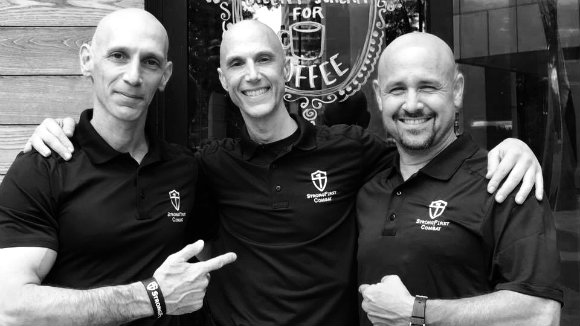
How did you end up training and fighting in muay Thai?
I started training in muay Thai in New York City in about 1992. I was working as a bartender at a nightclub to pay for grad school and my bar back was talking about this muay Thai thing he was doing. It sounded like fun, so I went to train with him one afternoon. Soon after I was hooked.
Because I was in grad school, I had some schedule flexibility, so I went to Thailand, where I lived and trained at Jitti Gym in Bangkok for several months. Then one day Kru Jitti walked up to me and suggested that since I was training, I might as well fight. He told me he’d made a match for me in two weeks. Thailand is a little more lax than the U.S. as far as experience and matchmaking, so I fought a Thai with well over 100 fights in a full rules pro match. I lost by decision, but came about one breath from knocking him out—I got so involved in the exchange I completely forgot to breathe. It’s still the most fun I have ever had, and after that fight, I was hooked.
What injuries did you sustain from both fighting and training?
Assorted strains, tears, bruises. Various cuts above and around the eyes that required stitching. Broken ribs. Fractured iliac crest. Broken hand, multiple times. Herniated disc. Broken nose, but that was my fault, goofing around in training. A lot of trauma over time added up to some serious mobility restrictions, pain, and asymmetries.
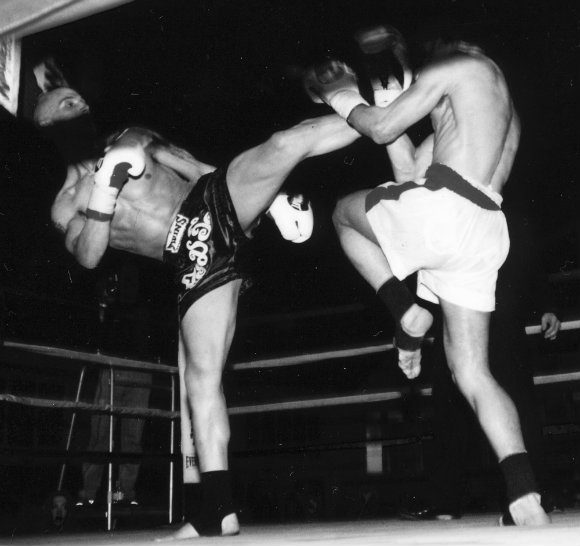
How did you go from being a high-level competitive fighter to training with kettlebells?
Around 2007, we had some independent trainers who rented space in the gym and one of them brought in some kettlebells. I started playing around with them a bit and was intrigued. I met a trainer who wouldn’t stop talking about this guy “Pavel.” So I attended a Level 1 with Pavel in Los Angeles.
To say it changed my life is not an exaggeration. My body was broken after a career as a fighter and I had pain and difficulty practicing muay Thai, the martial art I loved. Training with kettlebells according to StrongFirst principles fixed me. I got stronger, more mobile, more balanced. Kettlebells allowed me to continue doing what I enjoyed, and to be able to pass it on to my students—only in a superior, more intelligent fashion. I think that’s one of the great things about the StrongFirst Combat Course Ronen and Benny have put together—it makes a clear connection between StrongFirst training and martial arts training, and how the former improves and impacts the latter.
What is StrongFirst Combat and how does it connect the two systems (combat sports and kettlebells)?
Ronen is an internationally respected martial artist and head of Kyokushin Israel, while Benny has been involved in martial arts most of his life and held a high position overseeing training for Israeli state security. Benny and Ronen looked at the connection between StrongFirst training principles and the martial arts—a connection of which most of us involved with StrongFirst are intuitively aware—and codified it.
They essentially took things such as the swing, get up, tension/relaxation principles, and breathing, among other moves, and explicitly tied them to striking, grappling, situational awareness, and response. It’s a way for martial artists to learn how to integrate StrongFirst training into their skill practice, and a way to better prepare trainers to work with martial artists.
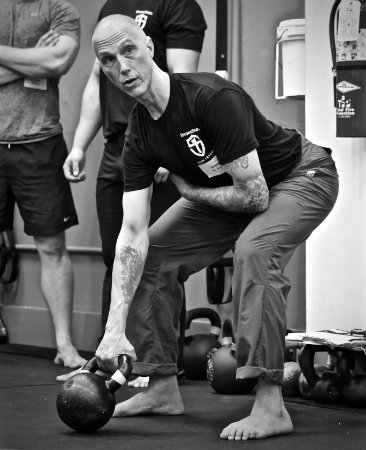
Will you give examples of how you integrate kettlebells into your fighters’ training?
The fundamental change that has happened as a result of my exposure to StrongFirst and Pavel is that we now know better than to let our fighters kill themselves with strength training. Strength training is supposed to enhance their martial arts/fighting, and if they are too beat up and exhausted for skill training, it defeats the purpose.
Additionally, while we’ve always talked about breathing and the time to be relaxed or tense, the StrongFirst Combat system has made it easy for us to break it down for fighters of all levels. Finally, the programming principles have allowed us to implement smart and productive strength, strength endurance, and conditioning training into fight training. And there is also the “WTH” effect, where we get fighters not only stronger but also leaner, healthier, and more resilient than they’ve ever been.
While we’ve had great success with many students and fighters using kettlebells for general physical preparation and StrongFirst methodology for strength training, I’ll give you three specific examples:
- My go-to example is always you, Emily Bearden. You are now retired (and a StrongFirst SFG Level II and SFL) after a long, successful career: sixteen years as a professional muay Thai fighter and a two-time world champion. Along the way, you suffered various injuries, most notably a stress fracture in your first thoracic vertebra, and consulted with many physical therapists and sports doctors who essentially told you that you were done fighting. We used get-ups (unloaded at the beginning) and deadlifts to slowly strengthen and heal your back to where you were able to not only get back in the ring, but continue successfully at an elite level.
- My second example is someone I’ll call “Fighter 1,” or F1. F1 came to us from another gym after losing to two of our fighters. This athlete had never followed a systematic strength-training program. I like to think our skill training has helped this fighter improve significantly, but I can’t discount the simple StrongFirst training program we implemented. The plan is get-ups five days a week, varying volume and load intensity on four-to-six week cycles with swings occasionally thrown in. F1 has become immensely stronger, has a much better grasp of how to get various body parts to work together, and—here’s one of those WTH effects—is at fight weight all the time, where that had been an issue in the past. F1’s adherence to the training has generated outstanding results. From a fifty-fifty win/loss record before joining our team to becoming an amateur champion several times over, being a member of the U.S. PanAmerican Team, and making a recent professional debut at Madison Square Garden.
- Another example is Fighter 2, or F2. At 5’6”, this athlete came to us at over 200lbs. While relatively strong, F2 was clearly too small to be fighting at that weight. We put the fighter on a program that involved swings. We began very light (16kg) until technique was perfect, then increased weight and volume. F2 is now swinging 32 to 48kg depending on the day and program cycle. Again, four to five times per week, never maxing or going to failure. The change has been unbelievable. F2 is stronger, faster, has more gas in the tank—and will debut at 173 pounds in one month.
Three simple programs using the swing and the get-up, two skills central to the StrongFirst Combat Course and to StrongFirst practice.
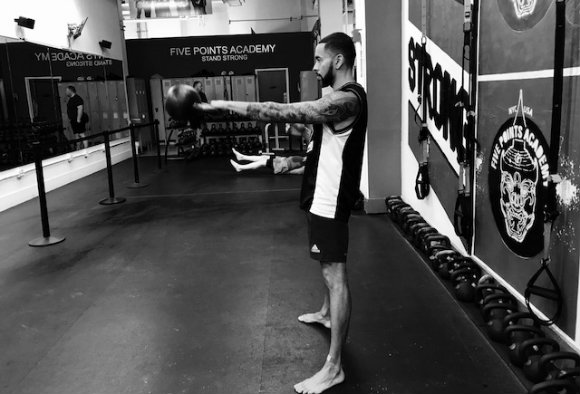
In StrongFirst Combat, there is a section dedicated to meditation and breathing work. Why is this important for athletes and people in general?
Breathing is important for everyone—I think it’s pretty clear that if you’re not breathing, you’re not going to be able to do anything else. And much of the general population breathes improperly—they are chest breathing, which is the way we breathe when we are frightened, anxious, etc. So we are breathing most of the time in a way that tells our bodies to be in an excited, panicked state. That’s no good for anyone. For athletes, that sort of shallow chest breathing impedes performance, recovery, and even the execution of skill. It was exceptionally insightful of Ronen to include an explanation and practice on proper, deep, diaphragmatic belly breathing in the StrongFirst Combat Course.
Meditation at first glance seems like an odd thing to put in the Combat Course, but I think it’s a little bit of genius. In addition to his background in martial arts and StrongFirst, Ronen is a decades-long teacher of Raja yoga. He includes the meditation practice in StrongFirst Combat because he believes it an important component of a healthy mental and emotional state and that it has carryover to pretty much everything. What Benny and I realized is it’s an incredibly useful tool for anyone who needs to operate in a state that transitions between action and recovery, such as a combat athlete. Ronen is a meditation purist and sees it as worthwhile in its own right, and he’s absolutely correct. But it’s also something that any fighter, or trainer of fighters, will recognize as a familiar tool to visualize scenarios and expedite the return of the body to a calm state.
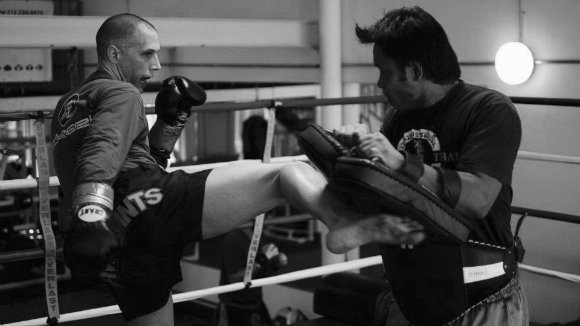
Ten years after you retired from fighting, you got back in the ring at the age of 49. Did you train differently for that fight? How did hard style kettlebell principles help you?
I retired when we opened Five Points. Having a martial arts academy is just about the surest way to make sure you don’t have enough time and energy to train properly yourself. But I missed getting in the ring, and the opportunity came out of nowhere twelve years later when I was 49.
I had discovered kettlebells, Pavel, and StrongFirst after I retired from the ring so my training was very different. And I had a school to run, classes to teach, and students to train so my training had to be efficient. I used swings, deadlifts, and get-ups for strength training and had time left over for roadwork, pads, sparring, and bag work. Despite my age and schedule, and the travel involved in fighting on the road, I was actually much better at 49 than I had been ten years earlier: quicker and stronger, much stronger. I won by unanimous decision and broke my opponent’s arm with roundhouse kicks, which is power I never had when I was younger. My opponent was a great sportsman, very gracious in front of his hometown crowd, and I had a blast.
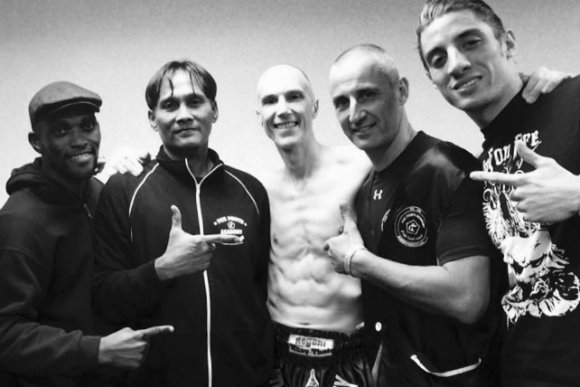
What mistakes do fighters make in their training programs? How can they train smarter?
The single biggest mistake—and one I made myself until I learned the hard way—is to overtrain. While you may occasionally encounter a fighter who doesn’t want to put the work in, it’s far more common to have fighters who think that more, harder, and longer is better. They’ll do too much, recover too little, and end up injured or weaker due to their training. A big part of being a good coach is designing a program that allows the fighter to train for strength and endurance without interfering with the training of the skill of fighting: pad work, sparring, bag work, etc. That’s where the emphasis needs to be. Smart training is training that allows for that to be optimized.
StrongFirst principles are perfect for this: training the least for the largest return, not training to failure. And as the StrongFirst Combat Course drives home, the lifts emphasize skills that are important to a fighter: generating the most power in the least time, using the whole body, breathing to generate power and tension. Additionally, I think an under-appreciated aspect of the Combat Course is the segment that Ronen has put in regarding breathing and meditation. You can’t get Ronen to admit it, because he views meditation as a goal in and of itself, but the breathing, relaxation, recovery, and visualization segment that is covered in the afternoon of the course is brilliant for fighters in terms of recovery between rounds and mental preparation.
For more information and upcoming dates and locations, visit the StrongFirst Combat page.


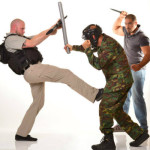
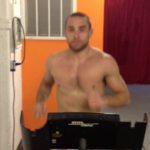

Why is the SF Combat Course no longer offered?
John, we don’t currently have a course scheduled. Our best suggestion is to subscribe to our newsletter to be kept abreast of all newly-scheduled StrongFirst workshops and courses.
Steve Freides
Director of Community Engagement
StrongFirst
Great article Emily!
Thank you for the insight into the SFCombat course.
And thank both you and Steve for always being hospitable, humble, caring and genuinely awesome!
SH
Thank you Scott. Glad you enjoyed it! Always enjoy having you down at Five Points!